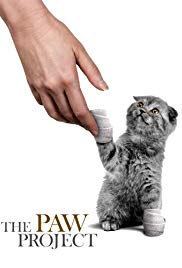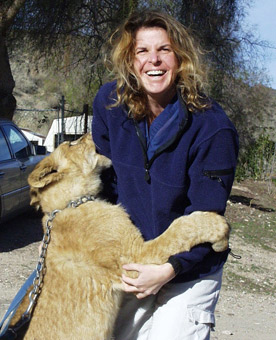Chapter 113. Texas Essential Knowledge and Skills for Social Studies
Subchapter C. High School
§113.41. United States History Studies Since 1877 (One Credit), Beginning with School Year 2011-2012.
(b)Introduction
(8) Students identify and discuss how the actions of U.S. citizens and the local, state, and federal governments have either met or failed to meet the ideals espoused in the founding documents.
(23) Citizenship. The student understands efforts to expand the democratic process. The student is expected to:
(A) identify and analyze methods of expanding the right to participate in the democratic process, including lobbying, non-violent protesting, litigation, and amendments to the U.S. Constitution; . . .
(C) explain how participation in the democratic process reflects our national ethos, patriotism, and civic responsibility as well as our progress to build a “more perfect union.”
§113.42. World History Studies (One Credit), Beginning with School Year 2011-2012.
(b)Introduction
(10) Students identify and discuss how the actions of U.S. citizens and the local, state, and federal governments have either met or failed to meet the ideals espoused in the founding documents.
**
(21) Citizenship. The student understands the significance of political choices and decisions made by individuals, groups, and nations throughout history. The student is expected to: . . .
(B) describe the rights and responsibilities of citizens and noncitizens in civic participation throughout history; and
§113.43. World Geography Studies (One Credit), Beginning with School Year 2011-2012.
(b)Introduction
(8) Students identify and discuss how the actions of U.S. citizens and the local, state, and federal governments have either met or failed to meet the ideals espoused in the founding documents.
(15) Citizenship. The student understands how different points of view influence the development of public policies and decision-making processes on local, state, national, and international levels. The student is expected to:
(A) identify and give examples of different points of view that influence the development of public policies and decision-making processes on local, state, national, and international levels; and
§113.44. United States Government (One-Half Credit), Beginning with School Year 2011-2012.
(b) Introduction.
(1) In United States Government, the focus is on the principles and beliefs upon which the United States was founded and on the structure, functions, and powers of government at the national, state, and local levels. This course is the culmination of the civic and governmental content and concepts studied from Kindergarten through required secondary courses. . . . Students analyze the impact of individuals, political parties, interest groups, and the media on the American political system, evaluate the importance of voluntary individual participation in a constitutional republic . . . . Students examine the relationship between governmental policies and the culture of the United States. Students . . . . and use critical-thinking skills to create a product on a contemporary government issue. . . .
(8) Students identify and discuss how the actions of U.S. citizens and the local, state, and federal governments have either met or failed to meet the ideals espoused in the founding documents.
(c) Knowledge and skills.
(2) History. The student understands the roles played by individuals, political parties, interest groups, and the media in the U.S. political system, past and present. The student is expected to:
(A) give examples of the processes used by individuals, political parties, interest groups, or the media to affect public policy; and
(B) analyze the impact of political changes brought about by individuals, political parties, interest groups, or the media, past and present.
(3) Geography. The student understands how geography can influence U.S. political divisions and policies. The student is expected to:
(A) understand how population shifts affect voting patterns;
(B) examine political boundaries to make inferences regarding the distribution of political power; and
(8) Government. The student understands the structure and functions of the government created by the U.S. Constitution. The student is expected to:
(H) compare the structures, functions, and processes of national, state, and local governments in the U.S. federal system.
(9) Government. The student understands the concept of federalism. The student is expected to:
(B) categorize government powers as national, state, or shared; . . .
(D) understand the limits on the national and state governments in the U.S. federal system of government. . . . .
(11) Government. The student understands the role of political parties in the U.S. system of government. The student is expected to:
(C) identify opportunities for citizens to participate in political party activities at local, state, and national levels.
(14) Citizenship. The student understands the difference between personal and civic responsibilities. The student is expected to:
(A) explain the difference between personal and civic responsibilities;
(B) evaluate whether and/or when the obligation of citizenship requires that personal desires and interests be subordinated to the public good;
(C) understand the responsibilities, duties, and obligations of citizenship such as being well informed about civic affairs, serving in the military, voting, serving on a jury, observing the laws, paying taxes, and serving the public good; and . . . .
(15) Citizenship. The student understands the importance of voluntary individual participation in the U.S. constitutional republic. The student is expected to:
(A) analyze the effectiveness of various methods of participation in the political process at local, state, and national levels;
(B) analyze historical and contemporary examples of citizen movements to bring about political change or to maintain continuity; and . . .
(16) Citizenship. The student understands the importance of the expression of different points of view in a constitutional republic. The student is expected to:
(A) examine different points of view of political parties and interest groups . . . . on important contemporary issues; and
(B) analyze the importance of the First Amendment rights of petition, assembly, speech, and press . . . .
§113.47. Special Topics in Social Studies (One-Half Credit), Beginning with School Year 2011-2012. c. Skills
(20) Social studies skills. The student applies critical-thinking skills to organize and use information acquired from a variety of valid sources, including electronic technology. The student is expected to:
(A) analyze information by sequencing, categorizing, identifying cause-and-effect relationships, comparing, contrasting, finding the main idea, summarizing, making generalizations and predictions, and drawing inferences and conclusions;
(B) create a product on a contemporary government issue or topic using critical methods of inquiry;
(C) analyze and defend a point of view on a current political issue;
(D) analyze and evaluate the validity of information, arguments, and counterarguments from primary and secondary sources for bias, propaganda, point of view, and frame of reference; . . . .
(21) Social studies skills. The student communicates in written, oral, and visual forms. The student is expected to:
(A) use social studies terminology correctly;
(B) use standard grammar, spelling, sentence structure, and punctuation;
(C) transfer information from one medium to another, including written to visual and statistical to written or visual, using computer software as appropriate; and
(D) create written, oral, and visual presentations of social studies information.
(22) Social studies skills. The student uses problem-solving and decision-making skills, working independently and with others, in a variety of settings. The student is expected to:
(A) use a problem-solving process to identify a problem, gather information, list and consider options, consider advantages and disadvantages, choose and implement a solution, and evaluate the effectiveness of the solution; and
(B) use a decision-making process to identify a situation that requires a decision, gather information, identify options, predict consequences, and take action to implement a decision.



